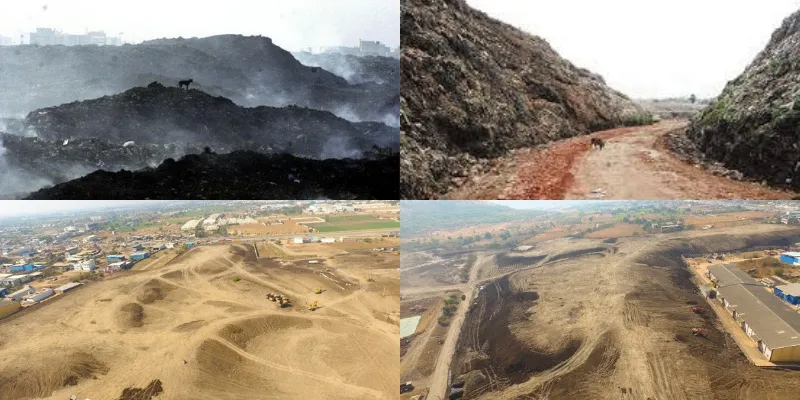This IAS officer cleared 13 lakh metric tonnes of garbage from a dumping ground in Indore in 6 months
Indore Municipal Commissioner Asheesh Singh has led the efforts of clearing the heaps of waste weighing down a 100-acre dumpsite in a cost-effective manner, that too within a short time.
India has been battling the war against waste, be it through sound recycling practices or efficient disposal of garbage. Both the government and citizens are waking up to reality and taking considerable steps to tackle waste management in new and innovative ways. Indore Municipal Commissioner Asheesh Singh, for instance, is leading by example.

In Indore’s Devguradiya, a 100-acre dumpsite proved to be an eyesore. Despite the city being dubbed the cleanest in India in 2017 in Swachh Survekshan survey, the dumping yard, saddled by heaps and heaps of smelly garbage for decades together, remained a concern for officials and citizens alike.
Also read: 90 pc blind IAS officer monitors 2.5 lakh students and 600 schools
But in a span of six months, the IAS officer has cleared 13 lakh metric tonnes of waste, and reclaimed the 100-acre dumping ground worth Rs 400 crore.
In an interview with the Efforts for Good, he said,
I decided to take machinery on rent and operate from our own resources. We operated this machinery in two shifts and completed the work in six months. The interesting fact is that we had to spend less than Rs 10 crore in the entire process.

Prior to Singh, who was appointed Municipal Commissioner in 2018, only two lakh metric tonnes of waste had been cleared in the two years. Earlier, waste management entailed roping in private contractors, an exercise that would set the city back by Rs 65 crore, reports The Quint.
Also read: Meet the Manipur IAS officer who built a 100 km road through crowdfunding
So, how did he achieve this feat? Under his guidance, the town deployed the technique of biomining or bioremediation. This process involves the segregation of usable soil and recyclable waste materials like paper, cloth, and plastic. Heaps of recyclables were then salvaged or upcycled. Polythene was sent to cement plants and was used in road construction, and the rubble from the waste was used for making new building materials.
Now with the land being cleared of the waste, it is being transformed into a golf course.
Also read: Meet the female IAS officer who is fighting electricity theft worth Rs 64k Cr
Do you have an interesting story to share? Please write to us at [email protected]. To stay updated with more positive news, please connect with us on Facebook and Twitter.







